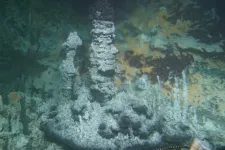The excavation of the Jacobins convent in Rennes
From 2011 to 2013, a team from INRAP excavated the convent of the Jacobins, site of the future congress centre in Rennes Métropole, giving rise to numerous scientific publications, particularly on Louise de Quengo (a noble Breton naturally mummified in her lead coffin), a musical score engraved on a slate and even the diet in Rennes during the Ancient Régime. The presence of two mass graves, containing more than thirty subjects, remained to be elucidated. These pits are contemporary and have 4 and at least 28 individuals respectively. The simultaneity of the deposits indicates a sudden episode: osteological analyses show that these soldiers, no doubt professional, died from stab wounds; radiocarbon analyses date the event from the mid-15th century to the end of the 16th century. All these criteria correspond to a single conflict: the War of Brittany (1487-1491).
The last Franco-Breton war
In the 15th century, the Duchy of Brittany experienced a period of prosperity due to the policy of the Montfort family, creating a princely state independent of the kingdom. Several reasons led to the conflict: the desire of the King of France, following the Hundred Years' War, to impose himself in Brittany; divisions within the Breton nobility and a ducal policy supporting revolts against the King of France. Moreover, since Duke François II did not have a male heir, the King of France, Charles VIII, claimed Brittany while the Duke positioned his daughters as the legitimate heirs. The war broke out in 1487. It involved many European forces: England, the Kingdoms of Castille and Aragon, the German Holy Roman Empire. The consequences of this conflict are still famous since it marked the end of Breton independence. The siege of Rennes in 1491 ended with the marriage of Duchess Anne of Brittany, then 14, to Charles VIII.
Two camps, two pits
The two pits excavated by INRAP in Rennes contained exclusively male skeletons. Large, mainly young, some are marked by perimortem trauma. But what camps did the Jacobin burials belong to? Sulphur, strontium and oxygen isotopic analyses were conducted to determine the geographical origin of these soldiers.
Preserved in mineralized tissues (bones and teeth), the proportions of these isotopes vary according to various factors such as geology (particularly for the strontium isotopes), climate, altitude and latitude (for the oxygen isotopes), and even distance to the coast (for the sulphur isotopes). By combining these three tracers, we can therefore identify restricted geographical areas for which all these criteria can explain the isotope values observed in the teeth (at the time of childhood and adolescence) and bones (approximately the last 10 years of life of the subject).
Thus, the first grave shows that 3 of the 4 skeletons have a high probability of Breton origin. The fourth has old stab wounds that have scarred over. Its sulphur isotopic values suggest that this was a professional soldier, allied to the Breton camp. Indeed, his diet rich in animal proteins and his genomic characteristics (his mitochondrial haplogroup is identical to that of Louise de Quengo and two of his burial neighbours) favour the hypothesis of a noble soldier rather than a mercenary. The combination of isotopic and genetic analyses reveal that this nobleman had family ties in Brittany, had grown up far from his region of origin, but had returned to fight in the war threatening his independence.
The 28 subjects in the other pit belong to the French camp. Indeed, sulphur isotopic analysis on most of the individuals indicates a non-Breton geographical origin. The geographical origin models based on sulphur, strontium and oxygen isotopes suggest that these soldiers come from the north of the Paris Basin, the Poitou region, the Rhône valley and the Alps. These geographical origins support the rare historical data on the recruitment of French soldiers during this war. Some individuals would have a more distant geography, and would come from Castille, Aragon, England and the German Holy Roman Empire. The isotopic analysis of their diet indicates heterogeneous consumption of animal proteins, suggesting soldiers of varied social status.
The study of human bone remains from mass graves provides unique, first-hand historical insights into sparsely documented conflicts. This research shows that the cross-use of three isotopes can verify assumptions about alliances and recruitment strategies in wars, and completes deficient historical archives about the lives of ordinary soldiers.
Predictive maps serving the history of migration
Here, the researchers develop geographical origin probability maps combining the sulphur, oxygen and strontium isotopes. They compiled 2,680 sulphur isotopic analyses from 221 sites across Western Europe in a database to observe the variations. These sulphur isotopic compositions across Europe are highly predictable and vary mainly with local deposits of sea salt and dust aerosols. Sulphur isotopes are highly complementary to those of strontium and oxygen and improve the accuracy of geographical attributions. The combination of these three isotopes then makes it possible to quantitatively and precisely assess the origin of the archaeological subjects, in particular making it possible to trace migratory flows.
INFORMATION:
References
Rozenn Colleter, Clément Bataille, Henri Dabernat, Daniel Pichot, Philippe Hamon, Sylvie Duchesne, Françoise Labaune-Jean, Stéphane Jean, Gaétan Le Cloirec, Stefania Milano, Manuel Trost, Sven Steinbrenner, Marine Marchal, Céline Guilbeau-Frugier, Norbert Telmon, Éric Crubézy, Klervia Jaouen, The last battle of Anne of Brittany: solving mass grave through an interdisciplinary approach (paleopathology, anthropobiology, history, multiple isotopes and radiocarbon dating), PLOS ONE
Clément P. Bataille, Klervia Jaouen, Stefania Milano, Manuel Trost, Sven Steinbrenner, Éric Crubézy, Rozenn Colleter, Triple Sulfur-Oxygen-Strontium Isotopes Probabilistic Geographic Assignment of Archaeological Remains using a Novel Sulfur Isoscape of Western Europe, PLOS ONE
INRAP
The Institut national de recherches archéologiques préventives (National Institute for Preventive Archaeological Research) is a public body under the oversight of the Ministry of Culture and the Ministry of Research. It works to detect and study archaeological heritage ahead of land-use planning. Each year, it carries out about 1,800 archaeological diagnostic missions and over 200 excavations for public and private developers, working in mainland France and overseas. Its missions cover the scientific analysis and interpretation of excavation data, as well as disseminating archaeological knowledge. Its 2,200 officials, who are spread out over 8 regional and inter-regional directorates, 42 research centres, and a headquarters in Paris, make it the largest European archaeological research operator.
CNRS
The Centre national de la recherche scientifique (National Centre for Scientific Research) is one of the world's most recognized and renowned public research institutions. After more than 80 years, the response to a requirement for excellence in the recruitment and development of multiple and interdisciplinary research projects throughout the territory, in Europe and abroad. Oriented towards the common good and the contribution to the scientific, economic, social and cultural progress of France. CNRS is above all 32,000 women and men and 200 professions. Its 1,000 laboratories, most of which are shared with universities, schools and other research organisations, represent more than 120,000 people; they advance knowledge by exploring life, matter, the universe and the functioning of human societies.
University of Ottawa: An intersection of ideas and cultures
The University of Ottawa has over 50,000 students, professors and administrative employees who live, work and study in French and English. Our campus is a veritable intersection of cultures and ideas, where audacious minds come together to further debate and conceive transformational ideas. We are one of the 10 leading research universities in Canada; our professors and researchers explore new ways to meet today's challenges. Ranked among the 200 top universities in the world, the University of Ottawa attracts the brightest thinkers and welcomes a diversity of perspectives from all over the world.
University Rennes 2
University Rennes 2 is Western France's most important research and higher education institution in the fields of arts, humanities and human and social sciences. It has committed to establishing itself as a major, internationally renowned research and training university by forming the University of Rennes project (UNIR), which brings together 7 institutions of the Rennes region. University Rennes 2 has 21,500 students and 21 research units, including 5 CNRS mixed units.
University of Toulouse III - Paul Sabatier
The University of Toulouse III - Paul Sabatier is one of the leading French universities with some 35,000 students. The diversity of its laboratories and the quality of its teaching in the fields of science, health, sport, technology and engineering have cemented its scientific influence for over fifty years. The university has 64 research-oriented laboratories and federative structures. From the atom to exoplanets, big data to oncology, human and social sciences to ecosystems, its fields of research are first-class and wide-ranging. It is recognised among the top 300 institutions for its scientific performance by the international ranking of the National Taiwan University (NTU ranking).
The Max Planck Institute for Evolutionary Anthropology
The Max Planck Institute for Evolutionary Anthropology is based in Leipzig, Germany. It is home to a wide range of scientific fields (natural and human sciences) with the aim of studying the history of humanity from an inter-disciplinary perspective, supported by comparative analyses of genes, cultures, cognitive capacity, languages and the social systems of past and present human populations and those of primates closely related to humans.
Contacts
Mahaut Tyrrell
Media Communications Officer
INRAP, partnerships and media relations department
1 40 08 80 24 / +33 07 40 59 77 - mahaut.tyrrell@inrap.fr
Sandrine Lalain
Communication and Cultural Development Officer
INRAP, Grand Ouest inter-regional directorate
02 23 36 00 64 / 06 45 99 16 03 - sandrine.lalain@inrap.fr
Alexiane Agullo
Press Officer
CNRS, Communication Directorate - Press Office
01 44 96 43 90 - alexiane.agullo@cnrs-dir.fr
Isabelle Mailloux Pulkinghorn
Gestionnaire des Relations avec les Médias | Manager, Media Relations
Université d'Ottawa | University of Ottawa
613.240.0275 - imaillou@uottawa.ca
Nadia Vujkovic
Research Promotion Officer
University of Toulouse III - Paul Sabatier
07 64 57 70 81 / +33 5 61 55 72 - nadia.vujkovic-bukvin@univ-tlse3.fr
Sandra Jacob
Press and Public Relations
Max Planck Institute for Evolutionary Anthropology
+49 (0)341 3550-122 - jacob@eva.mpg.de


